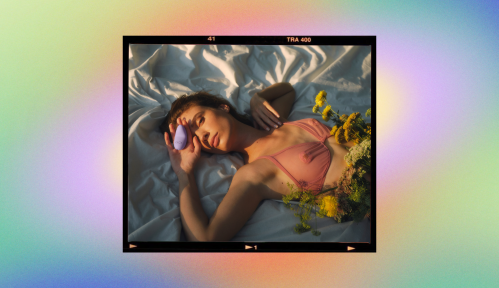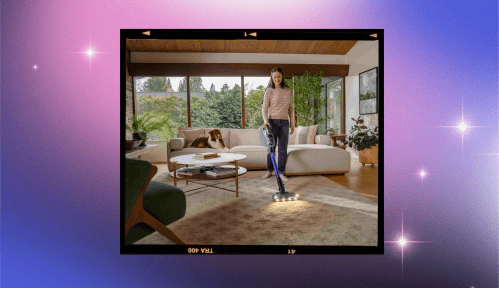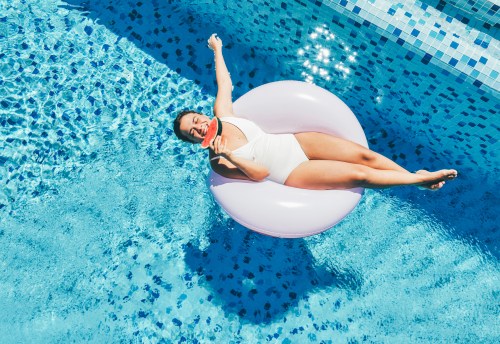Our editors independently select these products. Making a purchase through our links may earn Well+Good a commission
The way Frank Lipman, MD, sees it, we’re living in the Wild West of wellness.
As more people decide to take their health seriously and venture into this unchartered (for them) frontier, they’re bombarded with information. “People are anxious about their health and there’s so much interest [in wellness], but no one knows who to trust,” says the integrative medicine pioneer, a favorite of healthy celebs like Gwyneth Paltrow and Maggie Gyllenhaal. “What I see every day in my practice is people with no time; everyone’s really busy. They say to me, ‘Tell me what to do and how to do it.’”
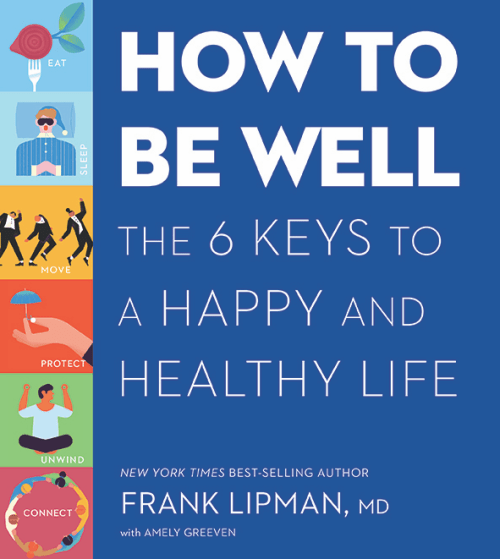
With his new book, How to Be Well (which will be released April 3), Dr. Lipman happily obliges. The book is a bright, glossy manual chock-full of actionable steps you can use to start—or jump-start—your wellness journey today.
Or rather, tonight. Because the first step, he says, is taking control of your sleep habits. Even more important than cutting out sugar (which Dr. Lipman has memorably called “the devil”) or getting in your daily steps is sleeping soundly at night.
“Sleep is a cornerstone of wellness: It’s essential for focused mental performance, a stable mood, a strong immune system, a healthy stress response, proper cellular repair, and a healthy metabolism,” Dr. Lipman writes in How to Be Well. “It’s when your body does much of its disease-fighting maintenance work.”
And yet…Raise your hand if you can remember the last time you dozed off easily and stayed asleep for the full recommended seven or eight hours. Oh yeah, and woke up in the morning feeling refreshed. I sure know my arms are down by my sides.
“Sleep is one of your body’s primary rhythms, and when you’re not sleeping properly, it’s usually a result of something else going wrong in your life during the day,” Dr. Lipman says. “It’s a symptom of some other imbalance. Just like, if you have the symptom of joint pain, the problem’s not necessarily your joints. What’s the underlying cause?”
“When you’re not sleeping properly, it’s usually a result of something else going wrong in your life during the day.” —Frank Lipman, MD
A likely culprit, Dr. Lipman says, is that you’ve disrupted your body’s innate circadian rhythm. Your body is naturally programmed to rise and set with the sun. But today’s world—filled with alarm clocks and florescent-lit offices and so. many. screens—does a really good job of interrupting this basic biological function.
“Tech messes with [your ability to fall asleep] in a couple of ways,” Dr. Lipman says. “One is, if you stay on your gadgets at night, it’s going to be hard for you to slow down your nervous system and relax. But probably more importantly is all the blue light that’s emitted from these devices. It goes into your eyes and affects your body’s perception of light and dark, which upsets the rhythm.”
To counteract this, Dr. Lipman prescribes a nightly digital detox with a side of Bob Marley—seriously. “It’s very hard for your body to go, go, go and then suddenly stop and fall asleep,” he says. “I think having some transition time—a hot bath, listen to some slow reggae music, a meditation, dimming the lights—is helpful.”
No iPhone, no cry?
For more about how you can reset your inner clock, check out the exclusive excerpt from How to Be Well below.
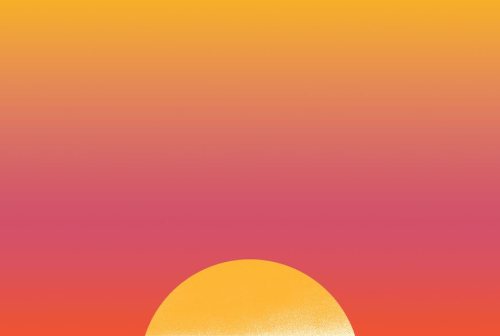
Restore your ancestral connection to the dark
Excerpted from How to Be Well, by Frank Lipman, MD
Ah, darkness. How far we’ve come from our ancestral norm, when the hours after sunset would have only been lit (after the advent of fire, that is) by the glowing red light of burning logs, the stars, and the moon. Since there was nothing much to do in the dark save hunker down out of sight of predators, sleep would occur soon after night fell. There would be no light again until sunrise. Our evolutionary DNA—the cellular information that determines how we function—knows true dark well.
But our modern minds and lifestyles don’t! Today, once night falls and any kids are (hopefully) in bed, the busy-ness begins. We get busy in the kitchen, busy catching up on work or catching up with our lives, and it all happens under a wash of omnipresent, artificial light. And it’s not just indoors: Our previously dark surroundings are now lit up, and our once mysterious starry skies are aglow with cityscape glare.
Experts say there’s been a tenfold increase in the amount of artificial light used per capita in the last 50 years, and that nights are bright in a way that, quite frankly, confounds our biology.
Experts say there’s been a tenfold increase in the amount of artificial light used per capita in the last 50 years, and that nights are bright in a way that, quite frankly, confounds our biology (some have gone so far as to label outdoor light pollution a human health risk). Consequently, our internal clocks run three to five hours later than in caveperson days, when we might have been asleep at 7 p.m. Yet we typically can’t sleep in to compensate for the loss—that giant lag would make anyone fatigued.
Excessive exposure to artificial light at night, particularly blue light, has been linked to increased risks for obesity, depression, sleep disorders, diabetes, and breast cancer. Biologists know that artificial light at night has terrible effects on nocturnal animals and migrating animals, birds, and insects. Why wouldn’t it be similarly disruptive for us?
Tempering your exposure to light at night, and ensuring a state of “true dark” when you sleep, is a crucial step in restoring rhythms and ensuring sleep wellness. Though only fringe health-seekers take it seriously right now—it’s this crowd that’s sparked the trend for wearing “blue- blocker” glasses at night—I predict that following healthy night-lighting behavior will someday be considered as important as eating your vegetables.
The more you can approximate preindustrial light conditions, the better your sleep will be, and it is possible to do this while still enjoying your home and life. Here’s how to harness the power of dark to improve your sleep.
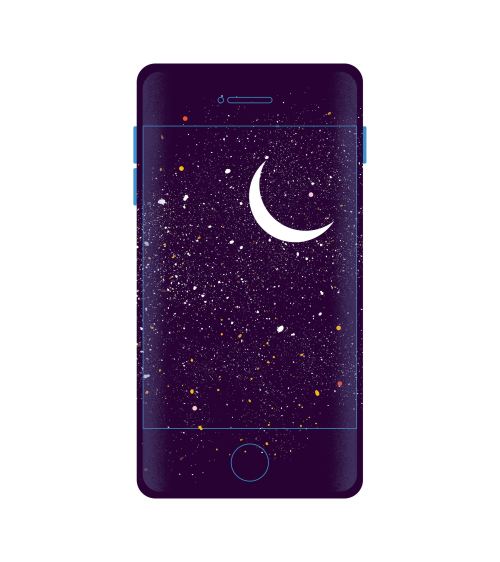
1. Create an electronic sundown
The single most important light exposure correction is to power down devices a couple hours before bedtime. This shields your eyes from blue light and lets your mind wind down. Install an orange-light app such as f.lux on your computer, use an app such as Night Filter for Android devices, or switch to Night Shift on your iPhone or iPad. (Other “evening” options are available for e-readers.) You can also purchase physical shields for computers and phones that protect your eyes from the damaging and straining effects of LED lights, made by a company called Reticare. And turn down the brightness of your screen: If you do end up plugged in and switched on at night, your device will at least cast a less-disrupting sunset-mimicking light.
2. Make your bedroom glow
If you wind down in your bedroom and read before sleep, replace the light bulbs by your bedside with amber-toned bulbs. You can get an amber-toned LED that will last for thousands of hours, or a HealthE Sleepy Baby bulb designed to keep babies dozing during nighttime diaper changes! Another option: a pink Himalayan salt lamp, which emits a gentle glow while, proponents say, helping to purify air of mold and bacteria, and mildly counteracting the “positive ion” impact of electronics. (Test it for yourself—many people report feeling better with these lamps in their homes.)
3. Dim the lights elsewhere
The truth of the matter is that any blue-wave light will stimulate your circadian rhythm the wrong way. Which means if you’re in the kitchen until 11 p.m., working under LED spotlights, it’s going to be harder to wind down. Dimming the lights in your home will help, but your best bet is to complete “brightly lit” activities earlier in the evening, then spend your last two hours before bed in a softly lit sanctuary. Use low incandescent lights, amber lamps, salt lamps, or glow lights; you can also use candles to emit a campfire glow, which has a profoundly soothing effect! There is even “smart lighting” that connects bulbs to smart home systems to create an amber wash of light at night.
4. To ensure appropriately timed melatonin release, you can wear “blue-blocker” gasses
[These] have orange lenses (the kind made for industrial protection) for the pre-bed hours! You won’t win any style prizes, but at $10 a pop, they’re worth a try if sleepy feelings elude you. The caveat: You must keep them on until all bright or white lights are out, even while brushing your teeth.
5. Survey your bedroom for unwelcome light
Since the receptors in your eyes are photosen- sitive when you’re asleep, illumination from the street outside your windows, and glowing lights on alarm clocks, gadgets, and air-conditioners, all can disrupt your sleep rhythm. Do a light detox: Make your bed- room a light-proof sanctuary by xing light seepage through your blinds or curtains (see page 109); remove electronics (turn your alarm clock around or, better yet, replace it with analog); and cover any remaining blips of electronic light with duct tape.
6. Use a very low-wattage night light in your bathroom if you need to get up in the night
Don’t turn on the overhead lights—even brief exposure will disrupt melatonin and make returning to sleep harder.
7. Don’t glance at your cellphone to find out the time in the darkness
That hit of brightness will be like a shot of espresso to your brain, even if it’s just for a few seconds while setting your alarm. Leave the cellphone outside the room.
8. Minimize any surrounding light pollution you can.
Use outdoor lighting only where necessary—add motion detectors or timers, or change the angle of lights. Need help cleaning up excess light from your surroundings? Check out darksky.org for resources on how to help minimize light pollution in your neighborhood as well as contribute to citizen science on the issue.
Before you turn off the lights, here’s how to arrange your furniture and outfit your bed (and yourself) for optimal zzz’s.
Sign up for the Well+Good SHOP Newsletter
Get exclusive deals on wellness, beauty, fitness, and food products that have been hand-picked by our editors.
Got it, you've been added to our email list.





